Your Top Non Surgical Nose Job Questions, Answered (Updated 2024)
February 1, 2024
While non surgical rhinoplasty is popular all around the world, few providers have more experience with…
Read Post
Mabrie Facial Institute
166 Geary Street
Floor 1300
San Francisco, CA 94108
Phone: (415) 445-9513
Text/SMS: (866) 618-9459
Monday–Friday 8 a.m.–5:30 p.m.
Can you have a non surgical nose job with fillers after having undergone rhinoplasty surgery elsewhere? The answer is yes, if you choose a non surgical rhinoplasty specialist like Dr. David Mabrie in San Francisco. While there is an increased risk with fillers after prior surgical rhinoplasty, the procedure can still be performed safely and effectively by a well-qualified Injector.
Rhinoplasty surgery has the highest rate of revision of any plastic surgery procedure—up to 20 percent. But revision surgery comes with risk, expense, and a lengthy recovery—and no guarantees you’ll get the outcome you want. The gel-like consistency of fillers makes it ideal for rebuilding and creating smooth contours with soft, predictable results. Unlike revision nose surgery, which is not adjustable and often requires a synthetic implant or harvested cartilage, fillers can be applied in a precise, controlled manner.
While surgical rhinoplasty can be a good option for big changes to the size, shape, and structure of the nose, it is not as well suited for subtle refinements—especially after a previous nose surgery. If your rhinoplasty results need improvement, we offer several non surgical treatment options at MFI. These are the most common treatments we perform on our post-surgical rhinoplasty patients. For a full list of non surgical rhinoplasty treatment options, visit our non surgical rhinoplasty page.

An angular, defined bridge is considered universally attractive and can enhance the overall appearance of your face. Unfortunately, many rhinoplasty patients develop problems in this area after surgery. The flexibility of non surgical rhinoplasty with filler enables us to improve the symmetry, proportions, and contours of this part of the nose.


It’s not uncommon for the bridge to “collapse” due to the removal of bone and cartilage during rhinoplasty surgery. This can cause indentations, retractions, notching, and divots, all of which can be smoothed with the skillful application of filler.


Overly aggressive rhinoplasty techniques can produce a bridge that appears too narrow, often with sharp edges. We can apply filler to soften these edges and create a more natural, harmonious appearance.


Surgical rhinoplasty can result in a crooked bridge from the frontal view or a “ski slope” appearance from the profile view. The bridge can be visually “straightened” by balancing the lines with the strategic application of filler.


Scar tissue and poor rhinoplasty techniques can cause a variety of contour irregularities. By adding filler to the bridge and tip, we straighten the nasal profile and smooth out the appearance of the humps, lumps, and bumps.
The tip of the nose is often a source of dissatisfaction after surgical rhinoplasty. By artfully injecting a filler during non surgical rhinoplasty—typically Restylane®—into the apex of the nose, we can create a variety of improvements.


A collapsed nasal tip may occur after surgical attempts to make the nasal tip smaller. Filler may be used to rebuild and reshape the tip.
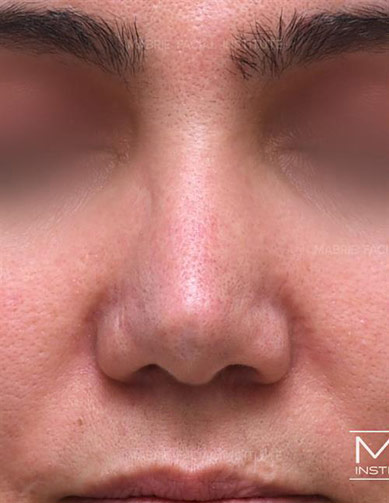
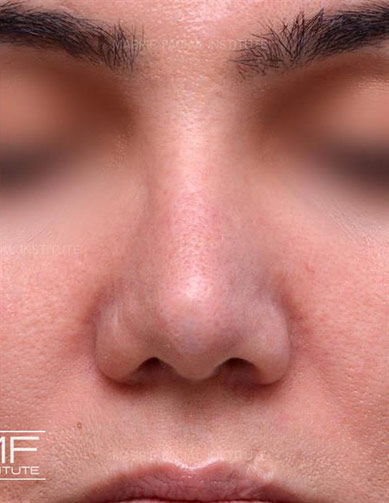
Rhinoplasty can leave you with a narrow, short, or “pinched” tip, often with sharp edges. We correct this by adding soft, natural-looking volume with filler.


The tip of the nose can sometimes collapse due to structural changes made during surgery. Patients may experience indentations, retractions, divots, notching, or asymmetry. Filler can smooth out these irregularities and produce natural-looking proportions.


The skillful application of filler can create a straight line between the bridge and the tip, correcting the appearance of an upturned nose.
The area under the nasal tip is visually prominent, and irregularities here can be highly noticeable. We can correct many issues with the nostrils and the columella (the strip of skin between the nostrils) without surgery.


We can “shrink” prominent nostrils by adding filler to visually lower the height of the nostrils.
You may have a retracted columella after nose surgery, or you may have the opposite problem: a low columella. Both of these can be adjusted with filler.
We carefully apply filler to improve symmetry and smooth indentations, retractions, divots, and notching in this area.
The cost of a non surgical rhinoplasty with Dr. Mabrie at MFI includes your first and second appointment and up to 2 syringes of filler over 2 visits. Please visit our dedicated pricing page to see the most current price information.
Once your nose is just right, you move into the maintenance phase of treatment. From this point on, we only need to see you once every 9 to 12 months, and touch-ups typically only require 1 syringe.
Qualified borrowers may be eligible for 0% financing for 6 to 12 months through CareCredit and Alphaeon medical financing.
As a facial plastic and reconstructive surgeon, Dr. Mabrie specialized in surgical rhinoplasty for more than 10 years and trained at Johns Hopkins and Stanford. He has in-depth, hands-on experience with the complexities of nasal anatomy and was one of the first surgeons to offer “liquid rhinoplasty” in the Bay Area. He has performed the procedure daily for more than 15 years. At MFI, we have mastered the art and science of applying fillers to specific anatomic locations to contour and sculpt the nose for optimal results and safety.
If you’re unhappy with your rhinoplasty outcome, chances are you need some delicate refinements, and a second surgery may not be the best choice. Fortunately, non surgical revision rhinoplasty with filler can be a safe alternative with excellent results and high patient satisfaction.
Risk – A second nose surgery can create new trauma, new scar tissue, and possibly damage to the nose. The surgery requires general anesthesia and is invasive whether you are making big or small modifications to your initial outcome. Every time you lift the skin, you disrupt the blood supply, with a possibility of weakening the structure of the nose and causing new problems. Some surgeons do not perform revision surgeries due to the increased risks.
Complexity/Cost – Revision rhinoplasty is more expensive than the initial surgery because of the higher medical risk and complexity of the procedure. After the initial surgery, there can be irregular scar tissue, changes in anatomy, as well as compromised blood flow/poor skin conditions, adding additional challenges to surgery.
Length of Recovery – You may be concerned about a long, uncomfortable recovery process where it could take an additional 6 to 9 months for final results to be visible.
Better for Refinements – Unlike surgery, nose filler results are immediate, predictable, adjustable, and reversible.
Quick and Easy – Treatment is minimally invasive with little discomfort and no downtime.
Cost Effective – Non surgical rhinoplasty is significantly less expensive than surgical rhinoplasty.
Your successful non surgical rhinoplasty experience starts with a thorough consultation with Dr. Mabrie at our chic, friendly San Francisco office. First, you’ll have an in-depth conversation to get clear on your aesthetic goals and expectations. Next, we take professional-level photographs of your nose from all angles. We utilize these photos at every visit to identify your concerns and monitor your progress. Using both the photos and the in-person examination, we map out a customized treatment plan tailored to your anatomy and goals.
Please plan to spend about 2 to 3 hours in the office for your first visit, which includes consultation, prep, treatment, pre- and post-treatment photography, aftercare education, and scheduling your next appointment. The injections themselves only take about 10 minutes and cause minimal discomfort.
Your corrective nose filler procedure requires a minimum of 2 appointments. This staged approach allows us to create structure, support, and superior, natural-looking results. Too much filler all at once can create obvious results, and it’s better to build and layer until we get it just right.
For more information about your treatment, visit Your Treatment Timeline.
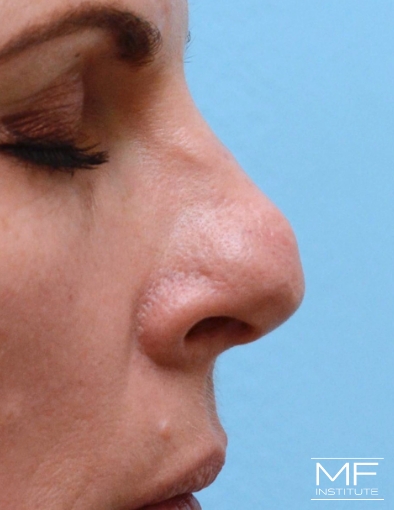
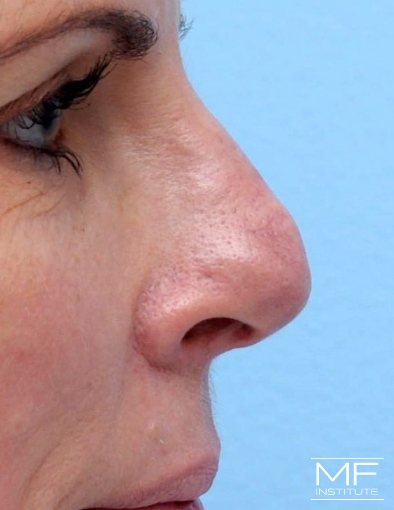
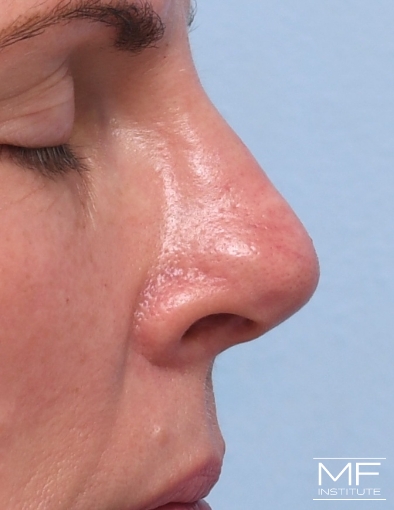
For the best filler experience, follow these tips in advance of your appointment:
Immediately after treatment, you may experience swelling, bruising, tenderness, and redness. These are normal side effects and are most apparent 24 to 48 hours after treatment. They can last up to 2 weeks but typically subside within 2 to 5 days. Most patients return to their routine activities the same day.
Because we know you have questions about your recovery process, we created an entire page dedicated to BOTOX and dermal filler aftercare.
While there is an increased risk when injecting fillers after prior surgical rhinoplasty, it can still be performed safely by a qualified Injector. When compared to the risks of a second rhinoplasty surgery, a non surgical nose job is significantly safer.
In addition to bruising and swelling, more serious complications can include infection, vascular occlusion (injecting into an artery), and, in rare cases, blindness. The risk of vascular occlusion is approximately 1% in patients with no prior nose surgery and 3 to 5% in patients who have had nose surgery. This is due to the presence of scar tissue from the prior surgery, diminished blood flow to the area, and the possible movement of blood vessels due to anatomical changes from surgery.
Vascular occlusion can rapidly progress to tissue necrosis if not identified and treated quickly by dissolving filler. An experienced Injector should be prepared with safety protocols and the tools necessary for optimal patient safety.
At MFI, we are prepared to address any adverse events and also increase the safety of this procedure by:
When considering non surgical rhinoplasty after a nose job, choosing an experienced, expert Injector is essential for your safety and the quality of your results.
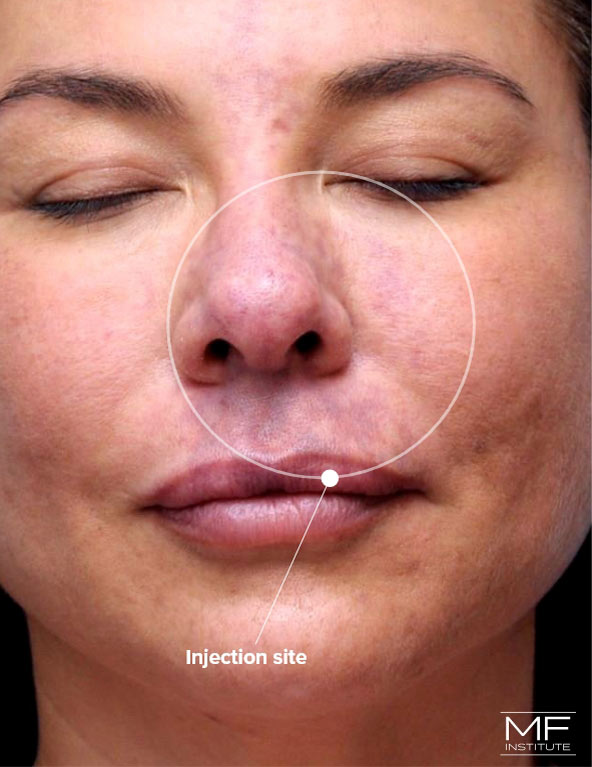
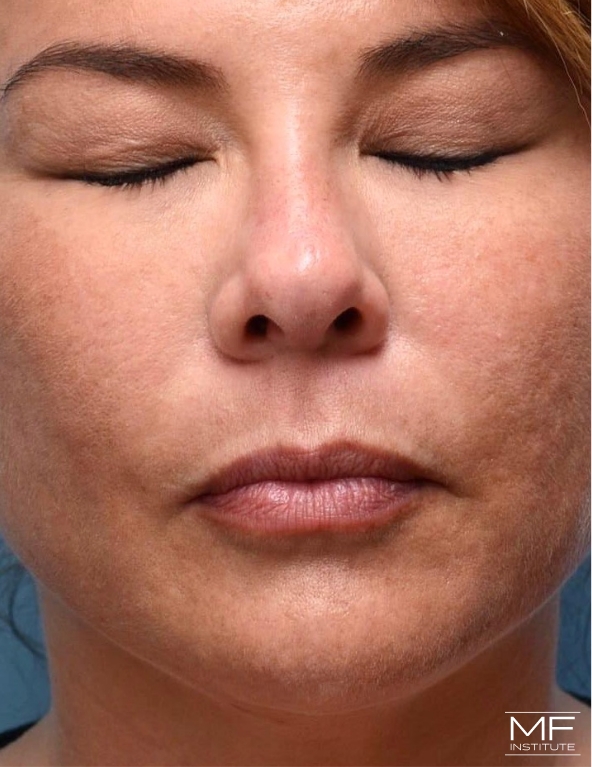
You may be a good candidate for non surgical nose job after rhinoplasty if you:
We advise that you wait at least 3 months after rhinoplasty to get nose fillers. This is the minimum amount of time needed for swelling to subside and your final rhinoplasty results to become apparent.
Your non surgical rhinoplasty results should last about a year. We recommend touch-ups every 9 months to maintain your results and minimize the amount of filler required at follow up treatments.
As a facial plastic and reconstructive surgeon, Dr. Mabrie specialized in surgical rhinoplasty for more than 10 years and trained at Johns Hopkins and Stanford. He has in-depth, hands-on experience with the complexities of nasal anatomy and was one of the first surgeons to offer “liquid rhinoplasty” in the Bay Area. He has performed the procedure daily for more than 15 years. At MFI, we have mastered the art and science of applying fillers to specific anatomic locations to contour and sculpt the nose for optimal results and safety.
If you are interested in learning more about non surgical nose job after rhinoplasty surgery, request a consultation online, or call us at (415) 445-9513 to schedule your appointment with one of our highly trained specialists. If you’ll be visiting us from outside the area, our Fly in for Your Procedure page was created just for you to help make planning your trip as smooth as possible.